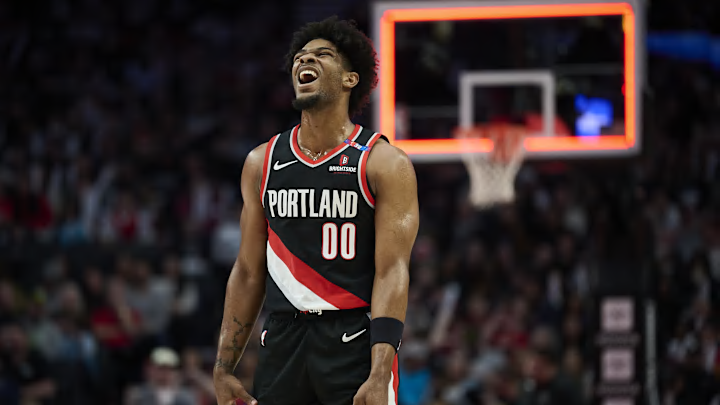Scoot Henderson's rocky rookie season left Portland Trail Blazers fans worried about the direction their rebuild was heading. After all, Henderson was the No. 3 overall pick in 2023, making him the player that Portland invested the most significant draft capital into. If he didn't pan out, it would set back their rebuild for years to come.
Following his disappointing rookie season, concerns arose surrounding nearly every aspect of Henderson's game. He was an unreliable three-point shooter, poor finisher, questionable decision-maker, and below-average defender. That led to many prematurely declaring Henderson a bust despite being just 20 years old at the time.
However, Scoot's second season reminded his critics that patience is a virtue when developing young guards, as they typically take longer to adjust to the NBA.
Scoot's second season was filled with more highs than lows
Henderson still had a rollercoaster 2024-25 season filled with highs and lows, and ideally, he would have been more consistent, but there were still enough promising takeaways for Portland to once again feel excited about the long-term outlook at their point guard position.
Henderson surprisingly finished with decreased counting stats compared to his concerning rookie year. He averaged 12.7 points, 5.1 assists, 3.0 rebounds, and 1.0 steals per game. On the surface, that's not all that encouraging. However, he was playing much more winning basketball in terms of his efficiency and decision-making.
Henderson developed into a league-average shooter, connecting on 35.4 percent of his three-point attempts. His 41.9 field goal percentage was nearly a three percent increase, reflecting his improved shot selection and ability to finish around the rim. Turnovers remain an issue if Henderson wants to become Portland's primary offensive initiator, but he did limit them to 2.7 per game, which was a 0.7 decrease.
The Blazers played a role in Henderson's inconsistency
He wasn't perfect by any means, but no 21-year-old guard is. You could also make a case that Portland held Henderson back from a full-on breakout.
There's plenty of talk about how Chauncey Billups is crucial for Henderson's development, especially since Billups himself was previously labeled a bust that later went on to become the 2004 Finals MVP in Detroit.
Billups told Henderson to be more aggresive and held him accountable on the defensive end in particular, which resulted in a 116.8 defensive rating, an improvement over his 120.1 rating as a rookie.
However, the Blazers lost sight of their priority of player development for a significant portion of the season. Billups relied heavily on veterans, likely in part to save his own job (or, at the time, audition for one elsewhere).
They did a great job of shutting down veterans for their end-of-season play-in push, which cleared the way for their young core. That would have been a golden opportunity to take another jump and carry that momentum over to the next season, similar to what happened with Shaedon Sharpe. Unfortunately, Henderson missed Portland's last eight games due to a concussion.
As a result, Scoot finished the year averaging just 26.7 minutes per game and a 22.5 percent usage rate -- unusually and questionably low numbers for a rebuilding team that recently spent a No. 3 overall pick on its point guard of the future.
Scoot's development is a catch-22. He wasn't prioritized this season and had a fluctuating role, often deferring to Simons and Avdija as the playmakers. That contributed to his inconsistent play, but it's also something that he'll individually need to improve for the Blazers to give him that increased role.
His play was streaky throughout the season, but his non-linear development still trended in the right direction. That alone makes Henderson's second season an overall success.
Grade: B-
